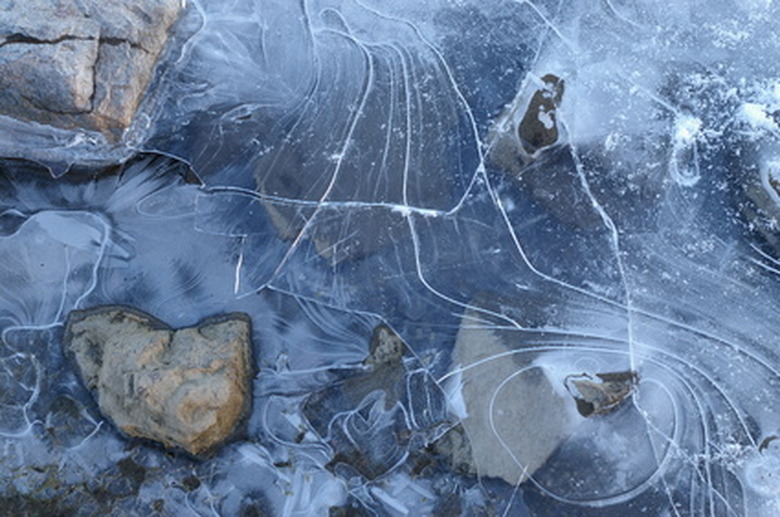What Factors Cause Mechanical Weathering?
Weathering is natural process that causes the breakdown of rocks into either smaller rock particles or new minerals. Weathering is the first step of the erosion process, which breaks down the three major rock types found near Earth's surface: sedimentary, igneous and metamorphic. One type of erosion is mechanical weathering, also known as physical weathering, whereby rock is broken down by physical forces. There are several such forces.
Exfoliation or Unloading
Exfoliation or Unloading
As upper rock portions erode, underlying rocks expand. The underlying rocks then begin to crack and peel away in sheets or slabs along joints, which are fractures or cracks that are regularly spaced beneath the surface. Some geologists consider the development of joints a type of mechanical weathering, as the joints form because of the expansion that occurs as the overlying rocks are eroded.
Thermal Expansion
Thermal Expansion
Repeated heating and cooling of some rock types can cause rocks to stress and break, resulting in weathering and erosion. High temperatures cause rocks to expand, then as temperatures cool the rocks contract. This continual expansion and contraction weakens the rock, eventually causing the rock to fracture.
Organic Activity
Organic Activity
Growth of plant roots and burrowing animals are types of organic activity that can contribute to mechanical weathering, as they cause rock material to break down and disintegrate.
Frost Wedging
Frost Wedging
As water seeps into rock cracks and crevices, cold temperatures can cause the water to freeze, resulting in ice deposits that expand and exert pressure on the rock. According to Missouri State University, frost wedging is the most abundant form of mechanical weathering. When frost wedging occurs on mountainous slopes it can cause a geographical feature called a talus, a slope of loosened gravel at the base of the mountain or cliff that is the result of frost wedging breaking loose pieces of bedrock from above.
Crystal Growth
Crystal Growth
Water seeping through rocks is responsible for two types of mechanical weathering: frost wedging and crystal growth. Depending on the ion content of the water and the mineral structure of the rock, water seeping through pores and fractures may precipitate the growth of crystals. The growth of these crystals can exert pressure on the surrounding rocks, causing them to weaken and fracture.
Cite This Article
MLA
LaVergne, Lisa. "What Factors Cause Mechanical Weathering?" sciencing.com, https://www.sciencing.com/factors-cause-mechanical-weathering-7281831/. 24 April 2017.
APA
LaVergne, Lisa. (2017, April 24). What Factors Cause Mechanical Weathering?. sciencing.com. Retrieved from https://www.sciencing.com/factors-cause-mechanical-weathering-7281831/
Chicago
LaVergne, Lisa. What Factors Cause Mechanical Weathering? last modified March 24, 2022. https://www.sciencing.com/factors-cause-mechanical-weathering-7281831/
